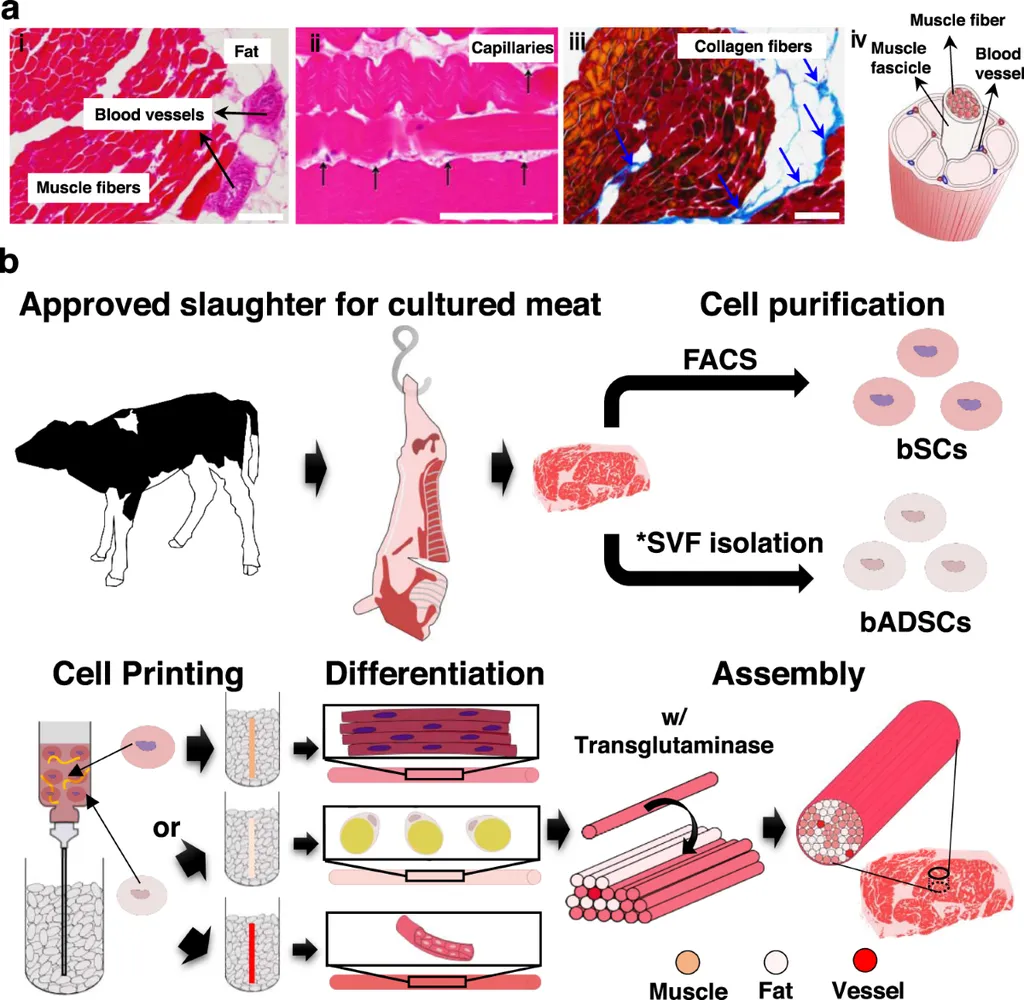In the burgeoning field of cultured meat, understanding the metabolic intricacies of muscle cell development is akin to discovering the blueprint for a skyscraper. A recent study published in the journal *npj Science of Food* (which translates to “npj Food Science and Technology”) has shed light on the dynamic shifts in metabolic demand during the progression of porcine skeletal muscle stem cells (PSCs), offering a roadmap for optimizing the cultivation process. The research, led by Doo Yeon Jung from the Department of Agricultural Biotechnology at Seoul National University, provides critical insights that could revolutionize the energy efficiency and scalability of cultured meat production.
The study focused on characterizing and analyzing the metabolomic profiles of PSCs at various stages of their myogenic progression—specifically at passages P1, P3, and differentiation days D1 and D2. The findings revealed a fascinating metabolic shift as the cells transitioned from proliferation to differentiation. “We observed that the cells relied heavily on glycolysis during the proliferation phase, but as they began to form myotubes, they switched to mitochondrial oxidative phosphorylation,” explained Jung. This metabolic reprogramming is a crucial discovery, as it highlights the need for tailored nutrient environments to support each stage of muscle cell development.
One of the most compelling aspects of the research is the identification of 94 intracellular metabolites, with 24 and 17 differentially abundant metabolites (DAMs) during proliferation and differentiation, respectively. Pathway analysis further underscored the importance of amino acid metabolism in energy production, a finding that could have significant implications for the energy sector. By optimizing the metabolic environment, researchers can potentially reduce the energy footprint of cultured meat production, making it a more sustainable and economically viable alternative to traditional livestock farming.
The study also revealed that the cells formed myotubes by day 2 of differentiation but detached by day 3, a critical observation that underscores the delicate balance required in cell culture conditions. “Understanding these metabolic shifts allows us to fine-tune the culture conditions, ensuring that the cells receive the right nutrients at the right time,” Jung noted. This precision could lead to more efficient and higher-quality cultured meat production, ultimately driving down costs and improving scalability.
The implications of this research extend beyond the laboratory. For the energy sector, the insights gained from this study could pave the way for more energy-efficient bioprocesses, reducing the overall environmental impact of cultured meat production. As the demand for sustainable protein sources continues to grow, the ability to optimize metabolic pathways in muscle cells could be a game-changer, offering a more efficient and eco-friendly alternative to traditional meat production.
In the broader context, this research highlights the importance of interdisciplinary collaboration between agricultural biotechnology and energy sectors. By leveraging the expertise of researchers like Doo Yeon Jung and his team, we can unlock new possibilities for sustainable food production, ultimately shaping the future of the energy sector and beyond. As the field of cultured meat continues to evolve, the insights from this study will undoubtedly play a pivotal role in driving innovation and progress.

